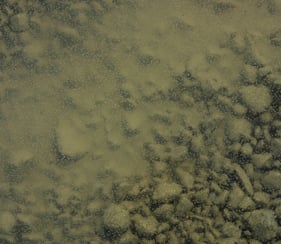 This is part one of the story about Onondaga Lake, considered at one time to be the most polluted lake in the United States.
This is part one of the story about Onondaga Lake, considered at one time to be the most polluted lake in the United States.
In early November 2014, Honeywell finished the dredging of Onondaga Lake, moving the lake one step closer back to a natural resource that can be used and enjoyed by the surrounding community. The lake in central New York covers more than 4.6 square miles, is one mile wide and 4.6 miles long. The early story of Onondaga Lake is one of prosperity and growth, turned to abuse and pollution. Once considered a public treasure with popular beaches, resorts and amusement parks, the lake fell victim to industrial development and the impact of a surging population.
Beginning in late 19th century, the lake became a dumping ground beginning with municipal sewage, which cut oxygen levels and increased disease causing bacteria and toxic contaminants. The sewage was followed by discharges from industrial plants around the lake, including mercury, salt processing residue, ammonia and PCBs. For more than 125 years, these factories disposed their waste into the late, resulting in heavily contaminated surface water and sediments, including pesticides, creosotes, heavy metals and volatile organic compounds such as chlorobenzene.
In an article about the resurgence of Onondaga Lake titled “Return to Glory,” the authors describe the conditions of the lake by the mid 20th century,
“By the 1950s, Onondaga Lake was a mess. Besides mercury and Solvay waste, other substances such as benzene, toluene, PCBs, cadmium and chromium had contaminated the lake’s bottom sediments and its tributaries, former manufacturing sites and the Solvay waste beds. The waste beds themselves had grown to 80 feet in height and covered more than three square miles of land.
“The lake’s water had become cloudy, and was contaminated by bacteria from sewage discharges and sewer overflows. The cloudiness was caused by sediment carried to the lake from its watershed and by algae blooms fed by high levels of phosphorus in the water.
“Sewage sludge was also dumped in the lake. Sometimes rafts of sludge would rise to the surface, where the sludge combined with algae to form floating mats of decaying material. As the sludge and algae decomposed, sulfide and methane gases drifted over lakeside communities. Onondaga Lake had become one of the most polluted lakes in America”
As a result of the pollution, the last of the resorts closed in 1938, swimming was banned in 1940 and a fishing ban followed in 1972.
Part two of the Onondaga Lake will cover the clean up and achievements from the 1970s to the 21st century. In part three, we will cover what has happened in the last 10-15 years as part of the largest restoration project in the country to give people hope that the lake will once again become a public treasure.
Teledyne Leeman Labs and their sister company Teledyne Tekmar's analytical instruments are used to test water for mercury and Volatile Organic Compounds (VOCs). For more information on these instruments, be sure to visit the products pages
Inductively Coupled Plasma Spectrometers (ICP-OES)

